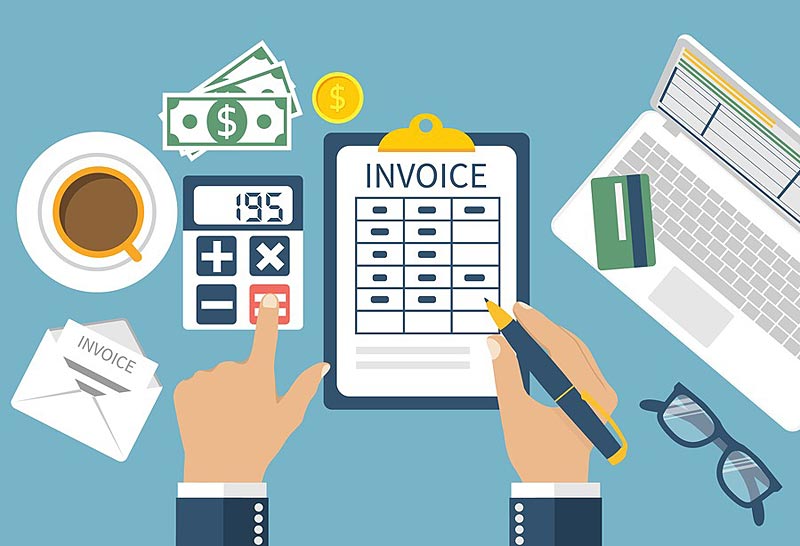A Tech Entrepreneur’s Guide to Invoice Factoring
Your small design or digital marketing business has finally mastered the art of proper invoicing. When starting a new business you are ambitious, creative, looking for clients and wanting to design great ads, posters, graphics and campaigns. You do not worry about cash flow, invoice factoring and paperwork nearly as much as you should. So let us learn how to ensure great cash flow for the life of the business.
Does this sound familiar to you? The paperwork gets placed at the back of the queue, the latest bill envelope remains unopened. We have all been there as business owners, paperwork simply gets placed aside for dealing with on another day. Eventually though the positive, strong revenues start to accrue, clients are happy and the projects are ever growing in scope and scale.
All that paperwork that has been slowly getting larger yet still gathering dust now demands attention. Invoices, bills, bank statements and all sorts of financial matters need dealing with. Owning a small studio requires a little bit of self learning and tutorial study in order to master all of these paperwork and financial aspects. You may even need an accountancy service or a bookkeeper to handle the queue of paperwork. Particularly those important items that deal with taxation, credit, invoicing and cash flow.
Design Companies and Agencies Must Manage Cash Flow

One problem as clients increase and projects scale is managing cash flow on more complex creative projects. Sure this can affect businesses in lots of niches and cash flow management is a critical component or running the business well. In the design and digital marketing field it means having to absorb lots of advance costs before being paid by the client. So what kind of activities might a design studio or digital agency have to front in advance with a typical client or project?
- Web hosting and network costs
- Programming conceptual developments
- Materials and consultations
- Additional training and research
- Travel and miscellaneous costs
While these business activities may not apply to every single client they sure rack up the cost of a project. Even if milestone payments have been agreed with a client it can be expensive. Perhaps thanks in no small part to online invoicing tools. now you are having another invoice-related problem. That is getting paid in a timely manner.
Small businesses, especially young, tech-related small businesses, often struggle to maintain a stable, dependable cash flow, but having sufficient cash on hand is paramount for growing a business big and strong.
However, if your clients aren’t paying your invoices fast enough, your cash flow will grind to a stop, you run out of money and the business either stagnates or fails. The client does not see this as their problem but it is certainly your problem. So how can cash flow risks to small design businesses be properly mitigated?
Fortunately, there is a way to be certain you will receive the money you deserve from your invoices: factoring. This financial guide for small design studios and digital agencies will help teach you about invoice factoring and how it can help your tech services or design business grow to dizzy new heights free from cash flow pressure.
So What Is Invoice Factoring?

Invoice factoring isn’t a new service; in fact, some historians believe factoring is as old as the idea of buying and selling. The concept is simple: Businesses sell their accounts receivable, or unpaid invoices, to a third party, called a factor, at a discount. The businesses then receive most of their unpaid invoice upfront, then the rest is passed over, minus an agreed fee when the client finally pays their invoice. For example when the client web site or poster campaign is completed and released depending on the project terms agreed.
Factoring is a financial transaction and a type of debtor finance in which a business sells its accounts receivable (i.e.,invoices) to a third party (called a factor) at a discount. A business will sometimes factor its receivable assets to meet its present and immediate cash needs. ( source Wikipedia )
In olden times as now, factoring is an excellent service for those that need the certainty of cash-in-hand. Until you have enough clients to manage a stable cash flow, you probably need the money you earn as soon as possible. By factoring your receivables, you might gain slightly less than you would if you waited for your clients, but the assurance of having what you need sooner is usually worth the cost.
Invoice Factoring Video Tutorials
Sometimes as with explainer videos it is of more benefit is someone visually explains the concept. As with these helpful invoice factoring video tutorials and guides.
Who Can Use Invoice Factoring Services?
Not every business can participate in invoice factoring, which is also called accounts receivable factoring, invoice discounting, and a slew of other names around the world. Most factors will only work with companies that invoice to other businesses or else have government contracts. Fortunately, many tech services firms and design studios are B2B, so you are likely eligible.
Additionally, many factors are quite strict in the invoice terms they will accept. Typically, businesses must require net-60 or net-90 financial terms. Which means clients must pay their invoices in full within 60 days (for the former) or 90 days (for the latter).
Some factors might have more stringent rules, such as invoice formatting or minimum invoice amounts. However, it should be simple enough for you to change your invoicing policy to suit your factor, or to find a factor that suits your needs.
Where Do You Find Invoice Factoring Options?
Typically, traditional financial institutions like banks don’t offer factoring services. Fortunately, the internet is an exceptional resource for acquiring alternative business financing, as you likely already know. With a simple search, you can find dozens of options for factoring receivables.
While the government continues to focus on banking regulations, the factoring industry is relatively unregulated. This means factors can say and do nearly anything they want without much fear of repercussions. Thus, it is imperative that you strive to find a trustworthy factor.
From the beginning, your factor should be straightforward about fees; many factors dissemble about their fee structure to make their prices seem superior to their competition, so a willingly transparent factoring company is an advantage. Additionally, your factor should have friendly and accessible customer service, so when you have questions or concerns, you will get answers right away.
Will Your Clients Know You’re Factoring?
Whether your clients are aware of your factoring practice depends on your factor and the services you choose. Typically, the answer is yes: Your clients will need to alter their payments, so your factor is receiving the money rather than you.
You might be able to find a plan that allows you to transfer payments from your clients to the factor, but likely that privilege will carry extra fees. Still, you should remember that most businesses are familiar with financial services, and many are well-aware of the benefits of factoring. Therefore, you shouldn’t be afraid of your clients finding out that you factor.
How Do You Use Factoring Income?
Perhaps the most beneficial aspect of factoring is the freedom it guarantees. Unlike other forms of financing, like lines of credit, small-business loans, or investments, you do not need to devote the money you gain from factoring to any specific business goal.
In truth, you already rightfully earned that money; you provided your clients with the services they requested, and you would probably have gotten that money on your own, eventually. Factors simply expedite the payment process, so you can spend your hard-earned cash immediately on whatever you like.


